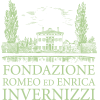Center for Engineered Multilineage Organoids in 3D Microenvironment
Novel technologies aim at the development of new biological models, able to mimic complex physiological interactions. Organoids have emerged as an innovative model system, based on isolated pluripotent or adult stem cells that self-assemble in complex 3D structures, remarkably similar to actual human organs, thus making feasible the study of biological processes in a physiological and animal-free setup.
The Center activity consists in bio-assembling 3D functional organ-like structures from patient-derived tissues and/or from genetically engineered human Induced Progenitor Stem cells. The Center will generate dynamic immune-competent structures encompassing functional vasculature, by the combination of 3D Bioprinting and fluidics technologies, thus recapitulating the complex interaction of the immune system with the other cellular components.
Projects
- Generation of patient-derived tumor organoids integrated with the stromal, vascular and immune-matched components
- Generation of lung organoids from genetically engineered human induced Pluripotent Stem Cells (hiPSC)
- Generation of complex 3D functional micro and millifluidic microenvironment for in vitro organ bio-assembling
Deliverables
- Animal-free models for disease modeling and immunotherapy
- Genetically engineered multifactorial organoids
- Personalized collaborations for ad-hoc devices design
- Production of functional organs for drug testing
Live imaging of the RBD-SPIKE (red) binding epithelial cells
Team
| Nome / Name | Ruolo / Role | |
|---|---|---|
| Stefano Biffo | Coordinator | biffo@ingm.org |
| Roberto Rizzi | Bioprinting and Biofabrication Unit -Head | rizzi@ingm.org |
| Jens Geginat | Affiliated member, Patient-derived organoids | geginat@ingm.org |
| Maria Kiratzis | Fellow | kiratzis@ingm.org |
| Giacomo D’Andrea | Fellow | dandrea@ingm.org |
| Sara Ricciardi | Affiliated member, iPSC | ricciardi@ingm.org |
| Paolo Ritter | Affiliated member, engineering | ritter@ingm.org |
| Stefania Oliveto | Affiliated member, millifluidic | oliveto@ingm.org |
| Claudia Bearzi | Affiliated member, iPSC | bearzi@ingm.org |
| Fabio Maiullari | Affiliated member, 3D Bioprinting | maiullari@ingm.org |
| Maila Chirivì | Affiliated member, Biomaterials and dECM | chirivì@ingm.org |
| Marika Milan | Affiliated member, 3D Physiology | milan@ingm.org |
| Valeria Bevilacqua | Affiliated member, Patient-derived organoids | bevilacqua@ingm.org |
| Tanya Fabbris | Affiliated member, Patient-derived organoids | fabbris@ingm.org |
| Martina Martinovic | Affiliated member, Organoid Imaging | martinovic@ingm.org |
Funding and History
The Organoid Center was originally grounded thanks to a Contribution from the Fondazione Romeo ed Enrica Invernizzi and the University of Milan, as HOMIC. Currently, the Center is hosted in INGM. Still funded by an original contribution from the Fondazione Romeo and Enrica Invernizzi, the Center has refined its mission after the Covid pandemy and now affiliates several independently-funded scientists with the common goal to bring organoid technology to the next frontier, encompassing multiple cell types, suitable for bio-medical research.
Equipment
Devoted cell culture facility and Biobank with the innovative printing platform (Cecilia 2.0) available at the Center, able to deposit the multi-bioinks (healthy and pathologic) with micrometric precision in a three-dimensional space. This approach can be used to generate specific human tissues of the individual. Also available RNAseq single cell analysis platforms including 10X and Icell8.
Publications
- Mapping of functional SARS-CoV-2 receptors in human lungs establishes differences in variant binding and SLC1A5 as a viral entry modulator of hACE2.
Miluzio A, Cuomo A, Cordiglieri C, Donnici L, Pesce E, Bombaci M, Conti M, Fasciani A, Terracciano L, Manganaro L, Toccafondi M, Scagliola A, Oliveto S, Ricciardi S, Grifantini R, De Francesco R, Abrignani S, Manfrini N, Biffo S.
EBioMedicine. 2022 Dec 28;87:104390. - Targeting of eIF6-driven translation induces a metabolic rewiring that reduces NAFLD and the consequent evolution to hepatocellular carcinoma.
Scagliola A, Miluzio A, Ventura G, Oliveto S, Cordiglieri C, Manfrini N, Cirino D, Ricciardi S, Valenti L, Baselli G, D’Ambrosio R, Maggioni M, Brina D, Bresciani A, Biffo S.
Nat Commun. 2021 Aug 12;12(1):4878. - In vivo organized neovascularization induced by 3D bioprinted endothelial-derived extracellular vesicles.
Maiullari F, Chirivì M, Costantini M, Ferretti AM, Recchia S, Maiullari S, Milan M, Presutti D, Pace V, Raspa M, Scavizzi F, Massetti M, Petrella L, Fanelli M, Rizzi M, Fortunato O, Moretti F, Caradonna E, Bearzi C, Rizzi R. Biofabrication 2021. Jan 12. doi: 10.1088/1758-5090/abdacf. - A multi-cellular 3D bioprinting approach for vascularized heart tissue engineering based on HUVECs and iPSC-derived cardiomyocytes.
Maiullari F, Costantini M, Milan M, Pace V, Chirivì M, Maiullari S, Baci D, Marei HE, Seliktar D, Rainer a, Gargioli C, Bearzi C, Rizzi R.
Sci Rep. 2018 Sep 10;8(1):13532. doi: 10.1038/s41598-018-31848-x. - Surface functionalization of acrylic based photocrosslinkable resin for 3D printing application.
Ronca A, Maiullari F. Milan M, Pace V, Gloria A, Rizzi R, De Santis R, Ambrosio L.
Bioactive Materials. 2017, 2(3): 131–137. doi:10.1016/j.bioactmat.2017.04.002 - In vivo generation of an artificial, functional skeletal muscle.
Fuoco C, Rizzi R, Biondo A, Longa E, Mascaro A, Shapira-Schweitzer K, Kossovar O, Benedetti S, Salvatori Ml, Santoleri S, Testa S, Bernardini S, Bottinelli R, Bearzi C, Cannata Sm, Seliktar D, Cossu G, Gargioli C.
EMBO Mol Med. 2015. 7:411-22.






